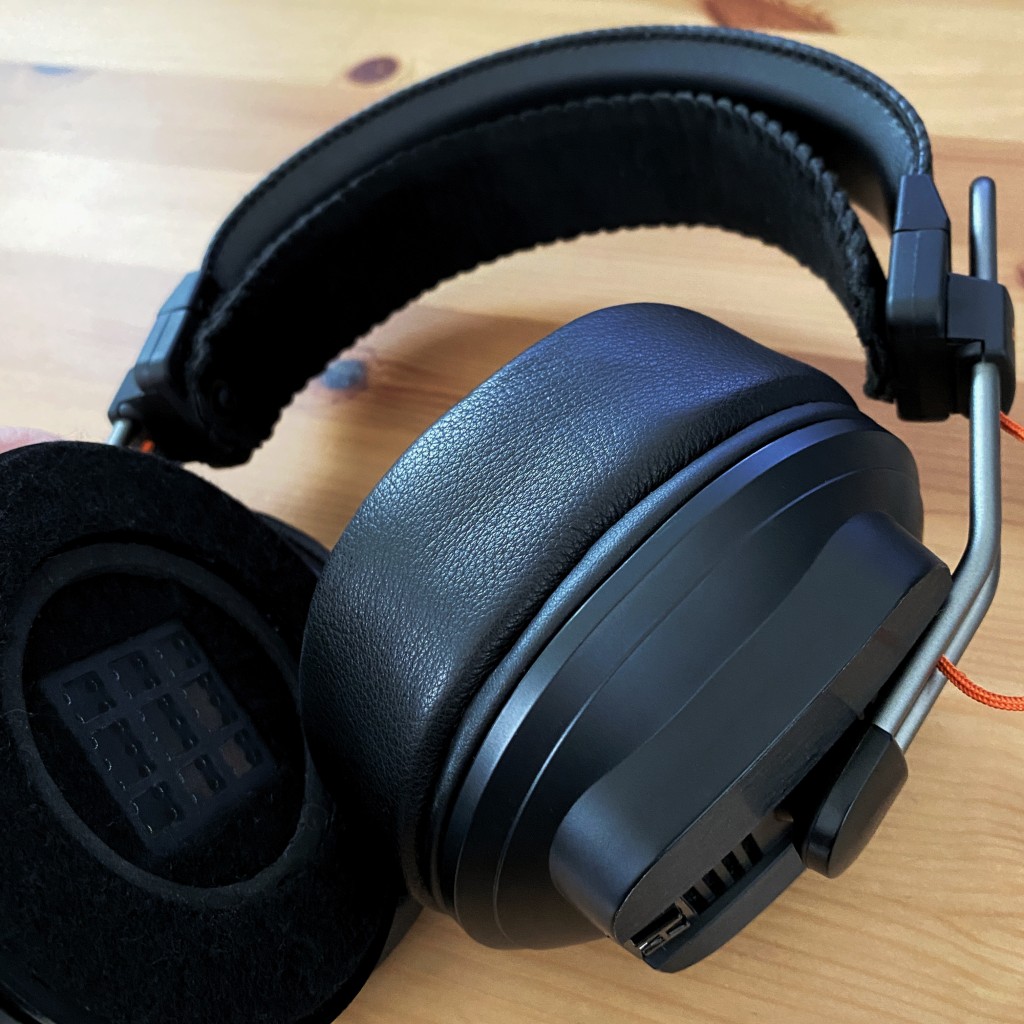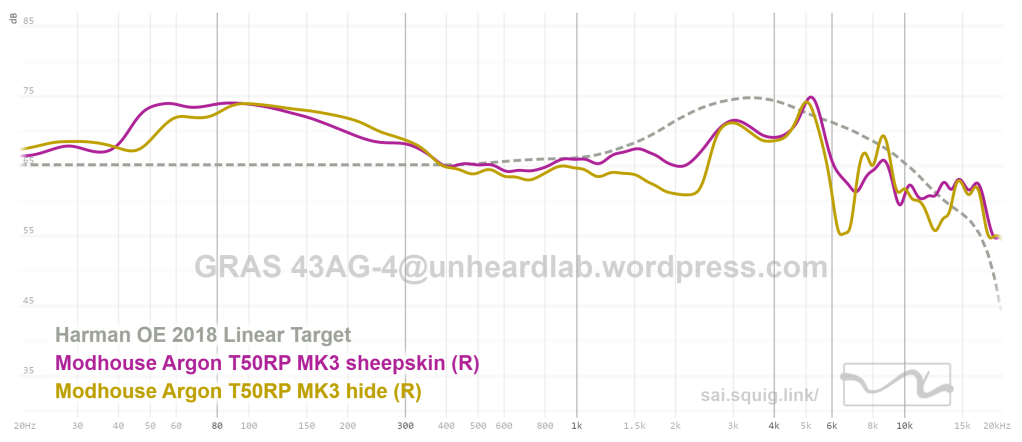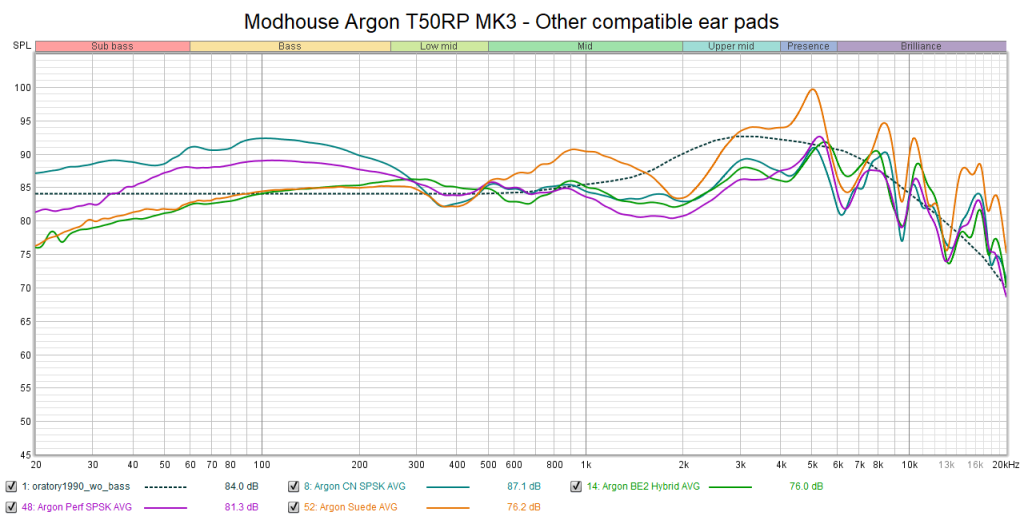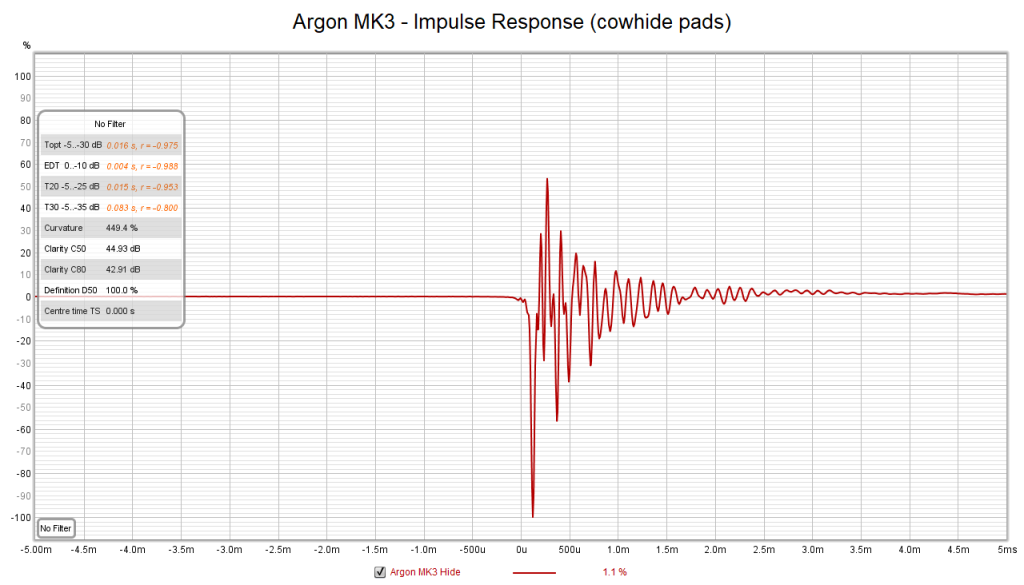
Here we have measured the effects of different headphone mods and tweaks, but this is the first time a complete third-party mod package. Unfortunately I haven’t tried the stock T50rp MK3 so this is an impression solely of the modded version. For measurement and sound description of the original, one can find in the wonderful database Solderdude offers at diyaudioheaven.
At first glance, what differentiates the T50RPs from most planars of today is driver size – you have a much smaller effective area as can be seen in the photo, which is only about 30*30mm. It also appears that the driver is well-damped, at least in the case of the Argon mod. This is reflected in the CSD measurement. There’s no obvious treble resonance and the lingering of energe in the mids is of weak magnitude.

Let’s now proceed to the sound:

First Impression:: With stock lambskin pads, these come across immediately as warm, punchy, laid-back and fun. Cowhide pads further reinforce these qualities (review below is based on the lambskin pads).
Pros: Bass impact, buttery mids, large soundstage
Cons: Resolution, refinement, naturalness
Tonality (interpreting FR): Bass boost of 9db makes for thunderously warm and thumpy low end. Note the boost is centred at around 100hz, but rolls off quite quickly below, so subbass is less audible than midbass. Upper bass bleed of about 5-8db between 250-300hz adds extra warmth and oomph. Mids are a bit reminiscent of the Harmonicdyne Zeus – overall not too far away from neutral, but clearly coloured towards a mellower, heftier presentation. Vocals can come across as slightly thicker than usual. Treble as a whole is dialed back a little in the mix, but still has enough energy across the top octaves. Transition from upper mids to treble and upper treble is not the smoothest though, and can occasionally give the impression of being less refined.
Technicality (qualities that may not be directly reflected in FR): Many praise these as having massive soundstage. Indeed, horizontal stage is quite expansive not least among closed-backs. In part this may be caused by the ultra-deep pads the Argons come with, which creates extra room between the ear and the driver. Stage depth is just ok though – there is perceptible layering of front and back instruments but not jaw dropping good. A smoother treble response may help. Dynamics and impact are also strong points, which is kind of expected given the bass response. These sound more like dynamic driver headphones than your usual planars, especially some of the Dan Clark/Hifiman ones that tend to display an ethereal character. Weak points are resolution and the sense of refinement. Brass and percussion instruments, as well as electric guitrar distortion can sometimes sound ‘plasticky’, especially when not well recorded. Control over busy passages is also not particularly impressive, in comparison to other mid-fi planars like the Sundara or the more expensive LCD2C.
I have also measured a few other pad options that happen to fit. None are particularly impressive so I would simply leave the graph here. (Legacy measurements)

The cowhide ear pads are the only ones acceptable. Changing to the cowhide pads also adds extra ‘reverb’ in the form of lingering energy though, as shown in CSD:

Impulse resonse also tells the same story. Transients are slower with the cowhide pads though it may add extra ‘euphoric’ feeling to the sound. To sum up, opt for the cowhide pads when you simply love the presentation of the Argons and want even more of it.


